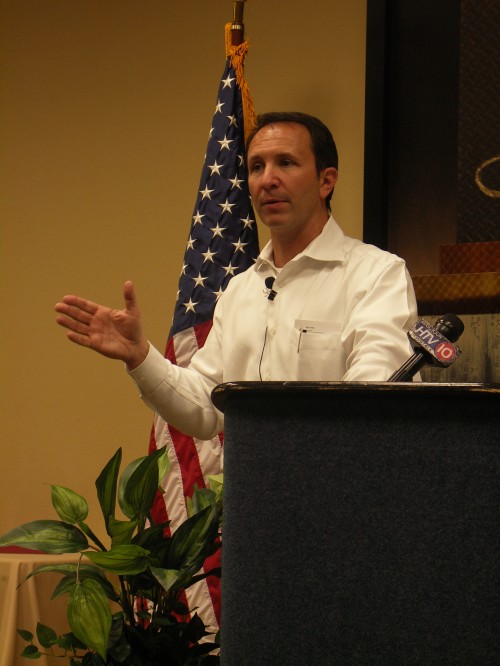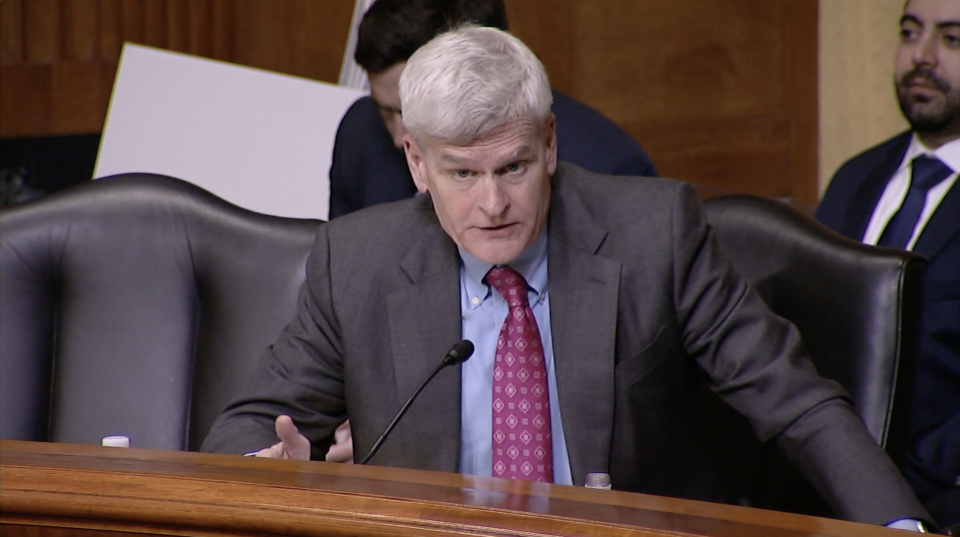
Park Dream taking shape for eastside area
June 12, 2012Fire board seeks added funds
June 12, 2012The U.S. Army Corps of Engineers will have to shelve its Modified Charleston Method for calculating wetlands mitigation within the state of Louisiana for one year if the Senate passes a federal appropriations bill in its current form.
An amendment to the bill sponsored by Rep. Jeff Landry, District 3, withholds funding from the corps if it continues to implement the controversial formula for calculating marsh creation concurrent with wetlands-damaging projects.
“My amendment forces the Corps to take a breath, use common-sense, and develop a mitigation system that provides for our wetlands without stifling protection projects,” Landry said in a press release.
The amendment passed via a voice vote on the House floor last week, and the bill passed through the House one day later by a 255-165 vote.
Opposing the amendment, Rep. Peter Visclosky, D-Ind., said it would delay the permitting process for projects, as the corps would have to devise a new method for calculating the damages, which would in turn require sweeping changes to the credit system currently used by mitigation banks.
Visclosky said the amendment would “ensure” less consistency to the way wetlands impacts are gauged. The congressman also said the Charleston Method, which is used in several corps districts, including Little Rock, Ark., was specially tailored for south Louisiana’s unique landscape.
Ricky Boyett, a corps spokesman, declined to speculate on the amendment’s impact on corps regulation.
“At this time, any information with regards to the impacts this amendment may have on the Regulatory permitting and mitigation processes would be speculation,” Boyett said via email.
Wetlands mitigation is the process in which project stakeholders – often state and local governments and levee districts – purchase credits at mitigation banks, which in turn create marshland, in effect offsetting the damages. The corps determines how many acres must be created per acre destroyed.
The corps announced last year it would change its mitigation formula in south Louisiana, an ostensible effort to increase marsh creation and make the calculation process more transparent.
The New Orleans District of the corps adopted a formula in place in the corps’ Charleston District, altered it for application in south Louisiana and called it the Modified Charleston Method.
As far as transparency is concerned, the new system is adored. Spreadsheets replace excusatory narratives, and subjectivity reigns over opinion.
But since increased creation requirements means increased, and sometimes preventative, project costs, the new formula puts a strain on local and state dollars raised for protective projects, critics argue.
Several local dignitaries, including levee district managers, coastal restoration advocates, parish presidents and federal lawmakers, have spoken out against the new formula.
Terrebonne Parish President Michel Claudet signed a letter addressed to Landry a letter in support of the amendment. The letter was included in the congressional record.
“This new method of mitigation calculation seeks to remove the practice of utilizing “best professional judgment” for factoring mitigation requirements, but in the process can force mitigation in the amounts of up to eight or nine acres of wetlands to be created for each acre of wetlands impacted,” Claudet’s letter says. “This simply makes necessary flood protection less affordable for governmental entities to finance.”
They argue that the Modified Charleston Method effectively heightens the mitigation ratio from 1-to-1 to 3-to-1 on certain projects, driving up the cost to unreachable prices on levee-creation projects.
“More often than not, you’re looking at a 3.1, 3.5 or even greater than a 3.5 ratio on those levees and future levees,” Keith Lovell, a coastal management administrator with the state Department of Natural Resources, told the Tri-Parish Times last month. “It’s the once every 10 or 20 year projects that we’re fearful that the MCM is going to severely impact.”
Some MCM critics also suggest that levee projects inherently protect marshland because they prevent saltwater intrusion and coastal erosion.
But Kerry St. Pe’, executive director of the Barataria-Terrebonne National Estuary Program, said levees need protection, too.
“In this location, we cannot, we cannot live here with just levees,” St. Pe’ said. “If there’s damage to the wetlands, mitigation has to occur. We would rather see wetlands created on the outside of the system.”
Mitigation has also derailed projects on the Northshore. The Times Picayune reported earlier this year that mitigation costs derailed the development of a Rouses Market near Mandeville.
Landry’s amendment was tacked on to the 2013 Energy and Water Development and Related Agencies Appropriations Act. The corps is one of the agencies funded by the bill.
Landry’s amendment prohibits the use of funds “within the borders of the State of Louisiana by the Mississippi Valley Division or the Southwestern Division of the Army Corps of Engineers or any district of the Corps within such divisions to implement or enforce the mitigation methodology, referred to as the “Modified Charleston Method.”
Lafourche, St. Mary and Terrebonne parishes are managed by the corps’ New Orleans District.
The amendment only affects one year, because the appropriations bill only covers one year.
Rep. Jeff Landry has presented a measure that blocks funds to the U.S. Army Corps of Engineers regarding wetlands mitigation in south Louisiana.










